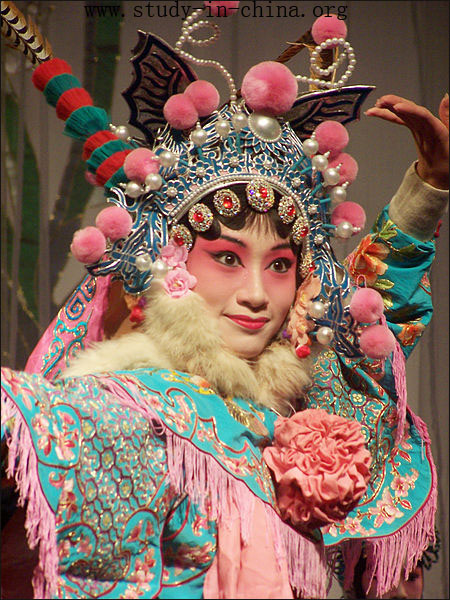more>>More News
- National Day
- ways to integrate into Chinese style life
- Should they be in the same university with me?!!
- Chinese Ping Pang Legend: the Sun Will Never Set
- A Glance of those Funny University Associations
- mahjong----The game of a brand new sexy
- Magpie Festival
- Park Shares Zongzi for Dragon Boat Festival
- Yue Fei —— Great Hero
- Mei Lanfang——Master of Peking Opera
昆曲 Kunqu Opera
By admin on 2015-02-02

Description
Kunqu Opera, also called Kunshanqiang, is said to be the mother of all Chinese operas. Its beginnings can be traced to the late Yuan Dynasty, some 600 years ago, in the lower Yangtze Valley. Among the earliest genres of drama, the traditional performing art was named for its birthplace, Kunshan, near the city of Suzhou in today's Jiangsu Province of East China.
The development of Kunqu Opera music went through several stages. In the early days, the songs were composed of long and short lines. The singer sang solo, and the orchestra came in at the end of each line. In the course, only percussion instruments were used.
In the Ming Dynasty (1368-1644), reformed by Wei Liangfu during the reign of Emperor Jiajing, Kunqu Opera became mild, smooth, and graceful. The performers attached great importance to clear recitation, correct singing, and pure tunes. Meanwhile, the composers wrote the musical scores after working out the tunes, and the songs were written in seven-character or ten-character lines. Moreover, three types of musical instruments (stringed instruments, bamboo flutes, and drums and clappers) formed the accompaniment. In addition, the jing and chou roles were no longer those exclusively portraying foolish, awkward, or stingy people.
Risk of Disappearance
Kunqu Opera, acknowledged as an elite opera, has suffered some of a decline since the eighteenth century because it requires a high level of technical knowledge from the audience. Today, it is facing competition from mass culture and a lack of interest amongst the young. Of the 400 arias regularly sung in opera performances in the mid-20th century, only a few dozen continue to be performed.
The Rebirth of the Kunqu Opera
A young girl appears as soon as the first notes of music are heard. Draped in a richly embroidered costume, she performs graceful hand movements. The elegance of her gestures is enhanced by her long silk sleeves. Accompanied by a flute, she begins to sing and the audience holds its breath.
Kunqu Opera
The scene is an excerpt from The Peony Pavilion, written by Tang Xianzu who lived in 16th century and is now known as "China's Shakespeare." Kunqu Opera is now becoming the object of renewed interest although it has long being threatened with extinction. Since 2001 when Kunqu Opera was proclaimed as a Masterpiece of the Oral and Intangible Heritage, the traditional performing art has experienced a rebirth in the past few years. Four classical plays, including The Peony Pavilion, have been restored and updated.
The Peony Pavilion tells the tragic tale of Du Liniang, who dreams during a walk in the park that she meets and falls in love with a young man. Unable to live her dream in reality, she falls mortally ill and, as she is dying, asks to be buried in the garden where she met her beloved. Later, Lui Mengmei, a student on his way to the capital, passes in front of Du Liniang's house and asks to spend the night there. As he sleeps, he dreams about the young girl. Revealing to him that he is the one her heart desires, she asks him to open her coffin. Liu Mengmei does so and Du Liniang comes back to life.
Since 2004, this updated version of the play, produced by Bai Xianyong, one of China's best-known contemporary authors, has been staged in a dozen universities in China. Teachers and students can buy tickets for as little as 10 yuan (US$1.23). Each time the performance attracts a large audience who praises the opera as being very sweet, graceful, and profoundly touching.
- Contact Us
-
Tel:
0086-571-88165708
0086-571-88165512E-mail:
admission@cuecc.com
- About Us
- Who We Are What we do Why CUECC How to Apply
- Address
- Study in China TESOL in China
Hangzhou Jiaoyu Science and Technology Co.LTD.
Copyright 2003-2024, All rights reserved




 Chinese
Chinese
 English
English
 Korean
Korean
 Japanese
Japanese
 French
French
 Russian
Russian
 Vietnamese
Vietnamese
